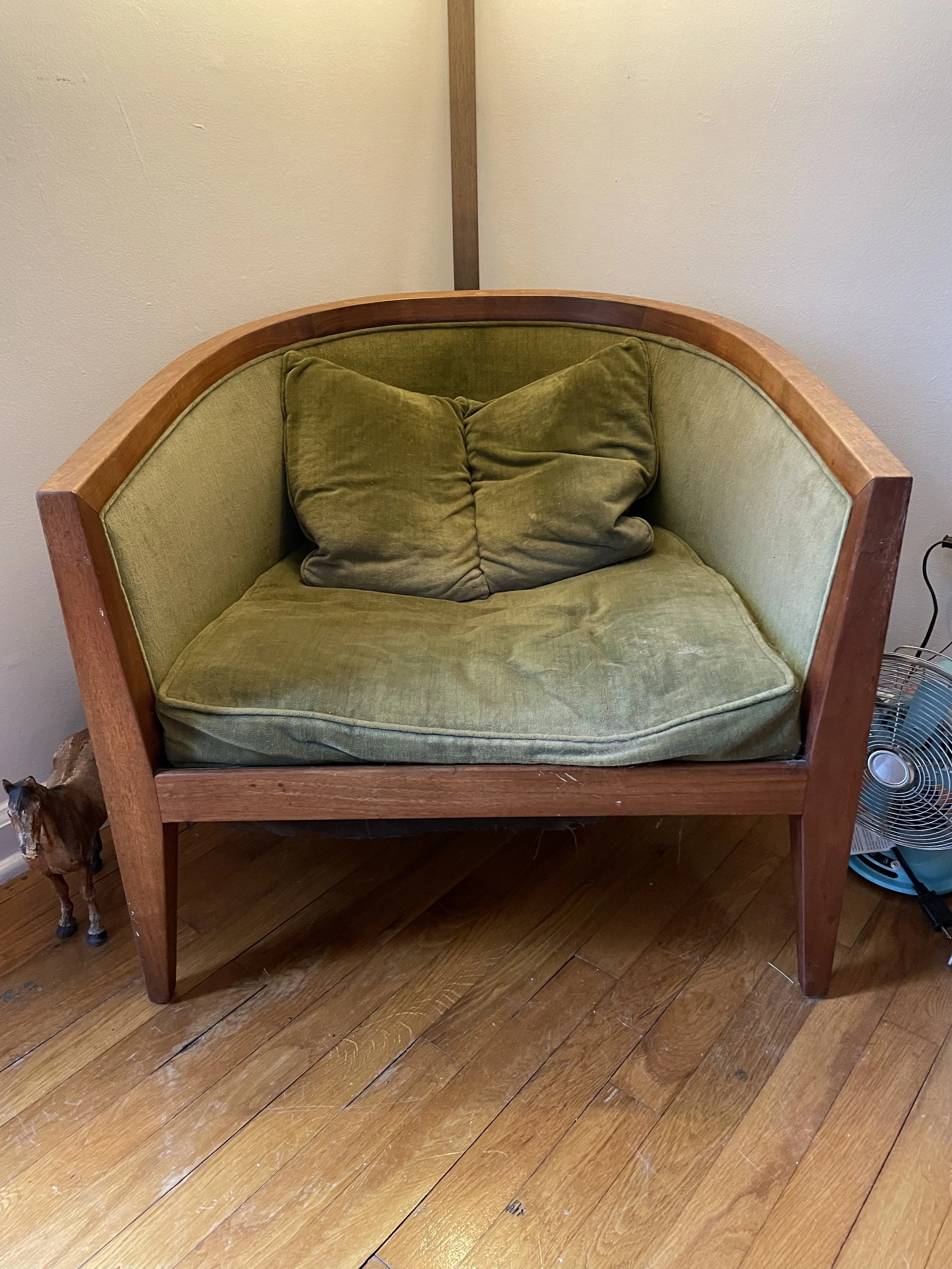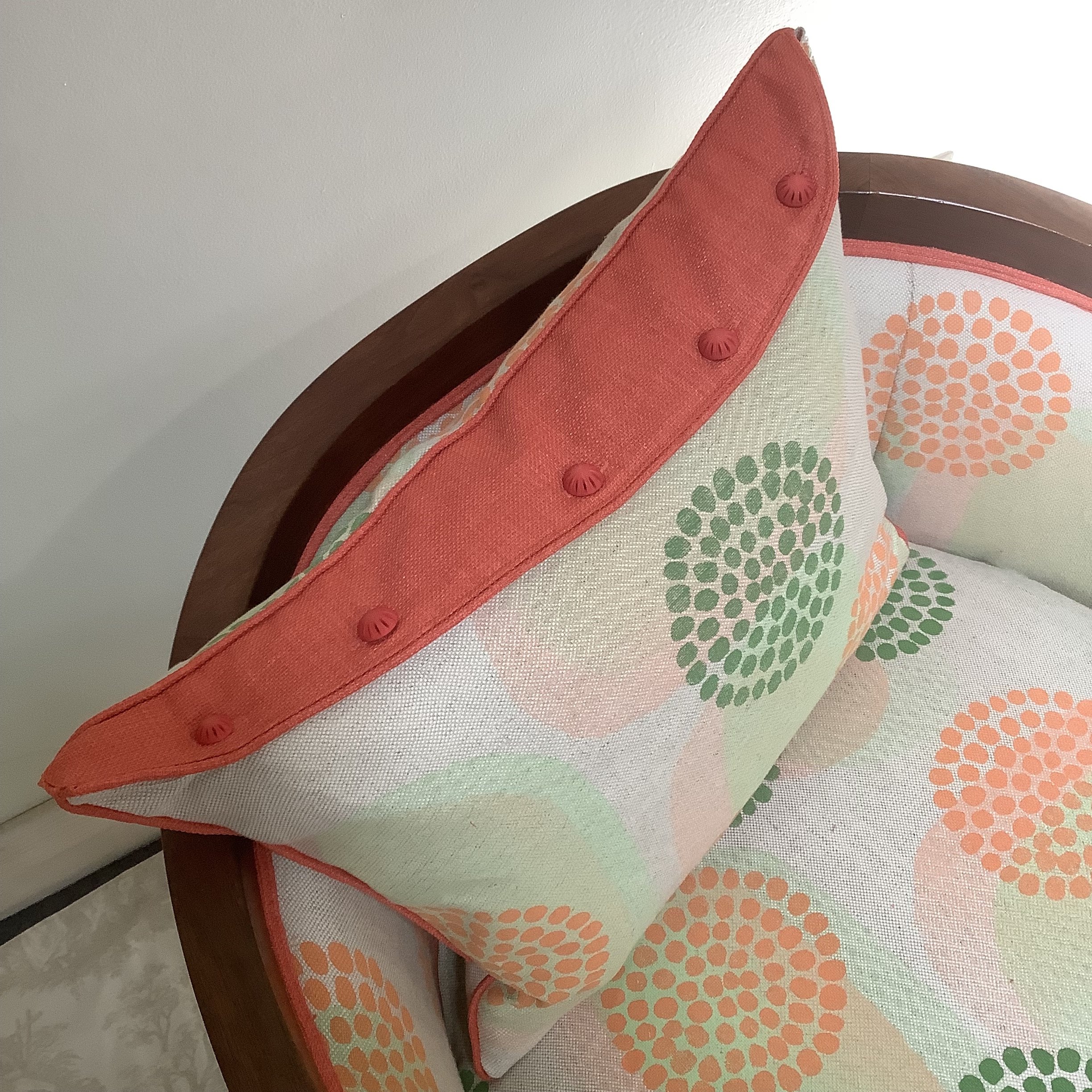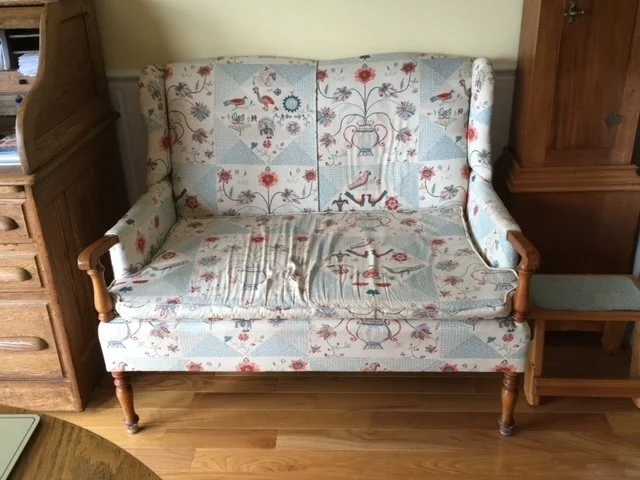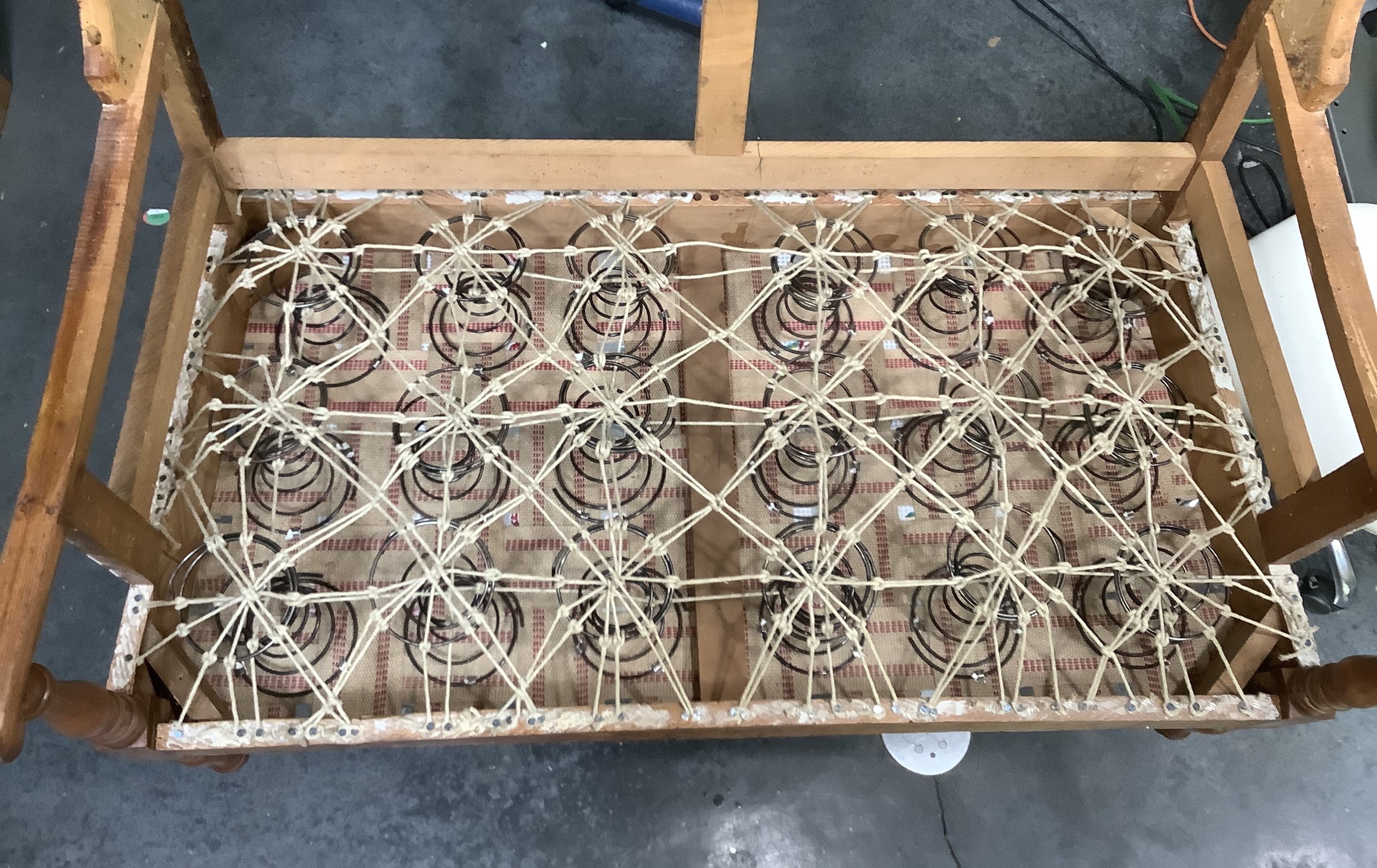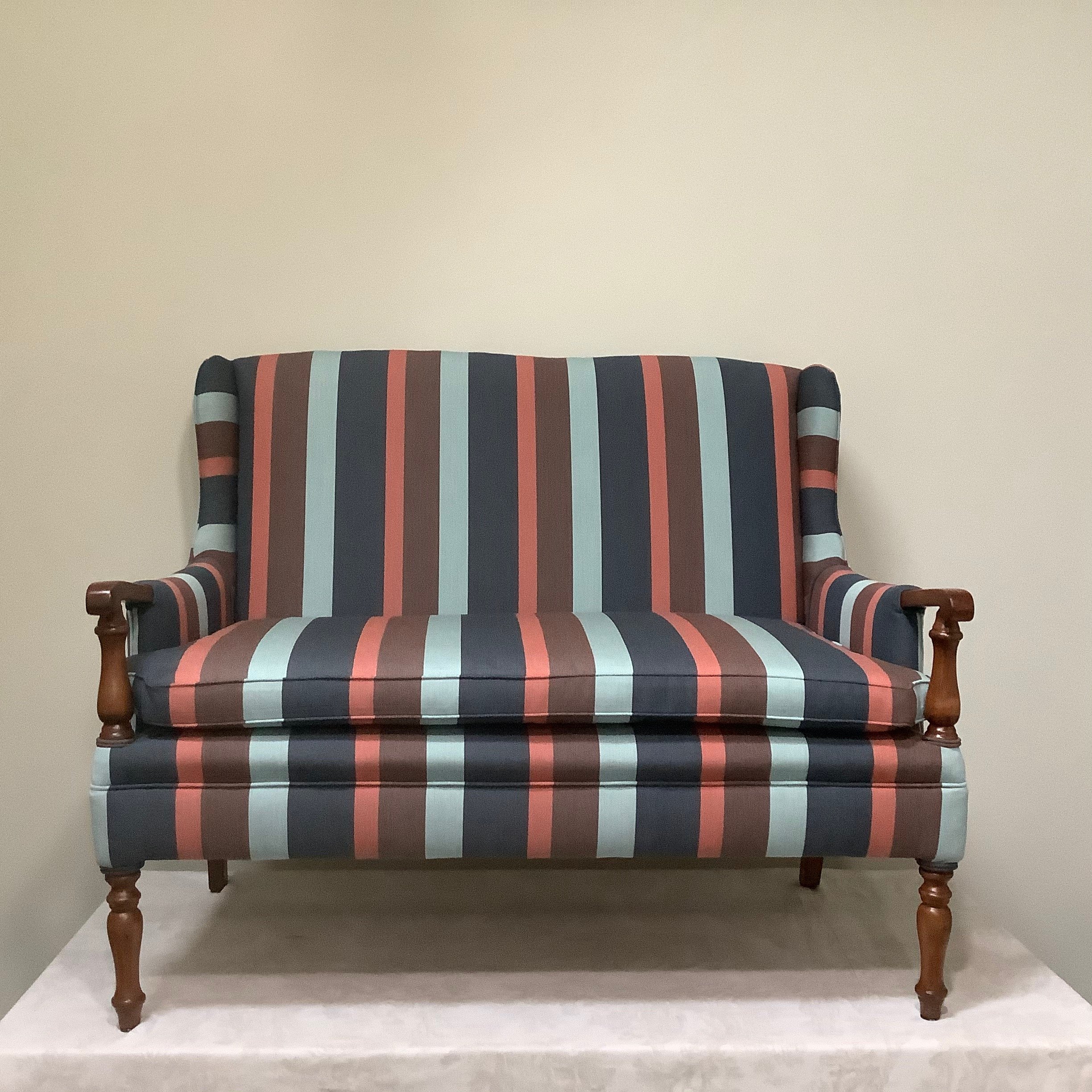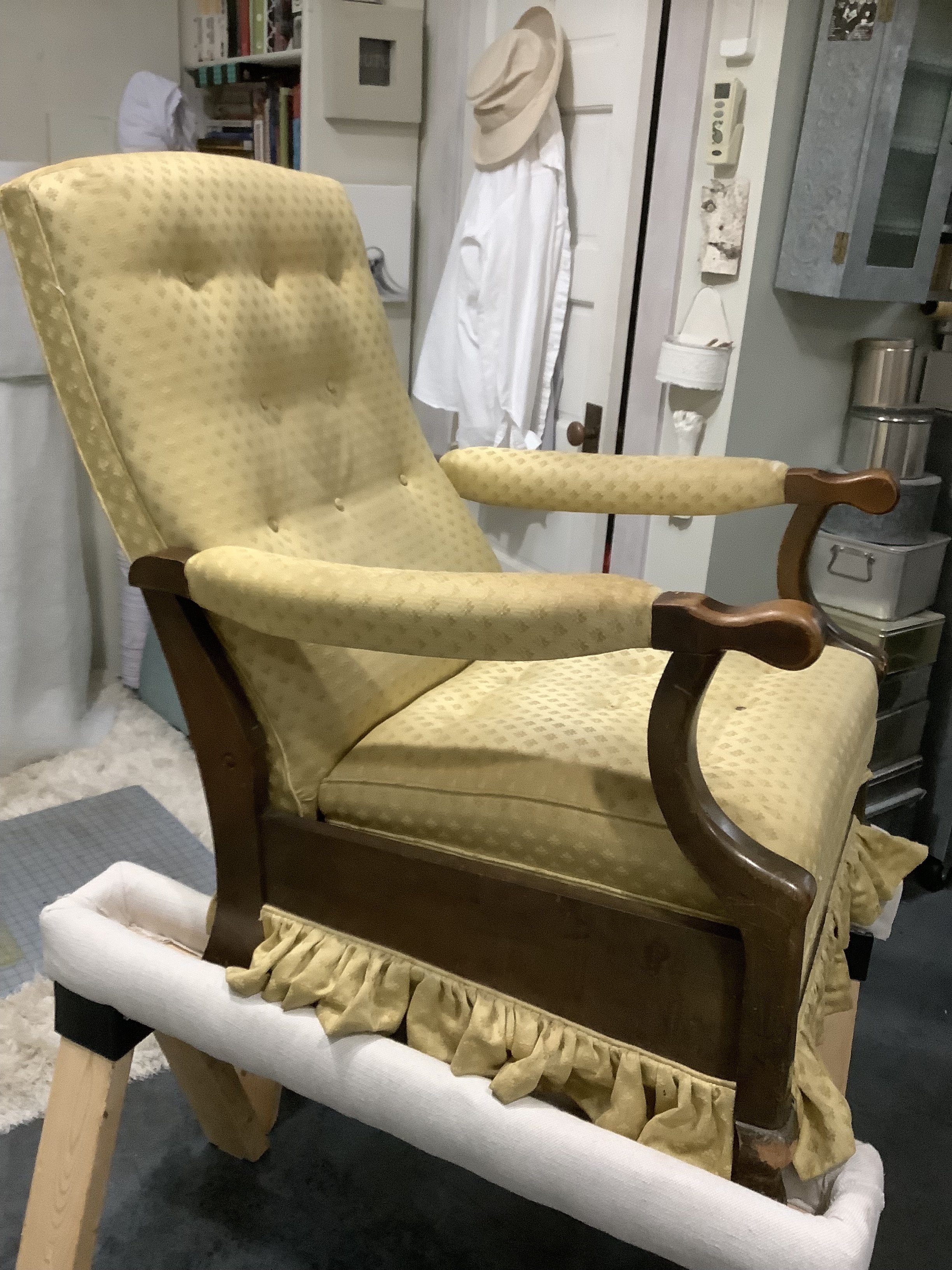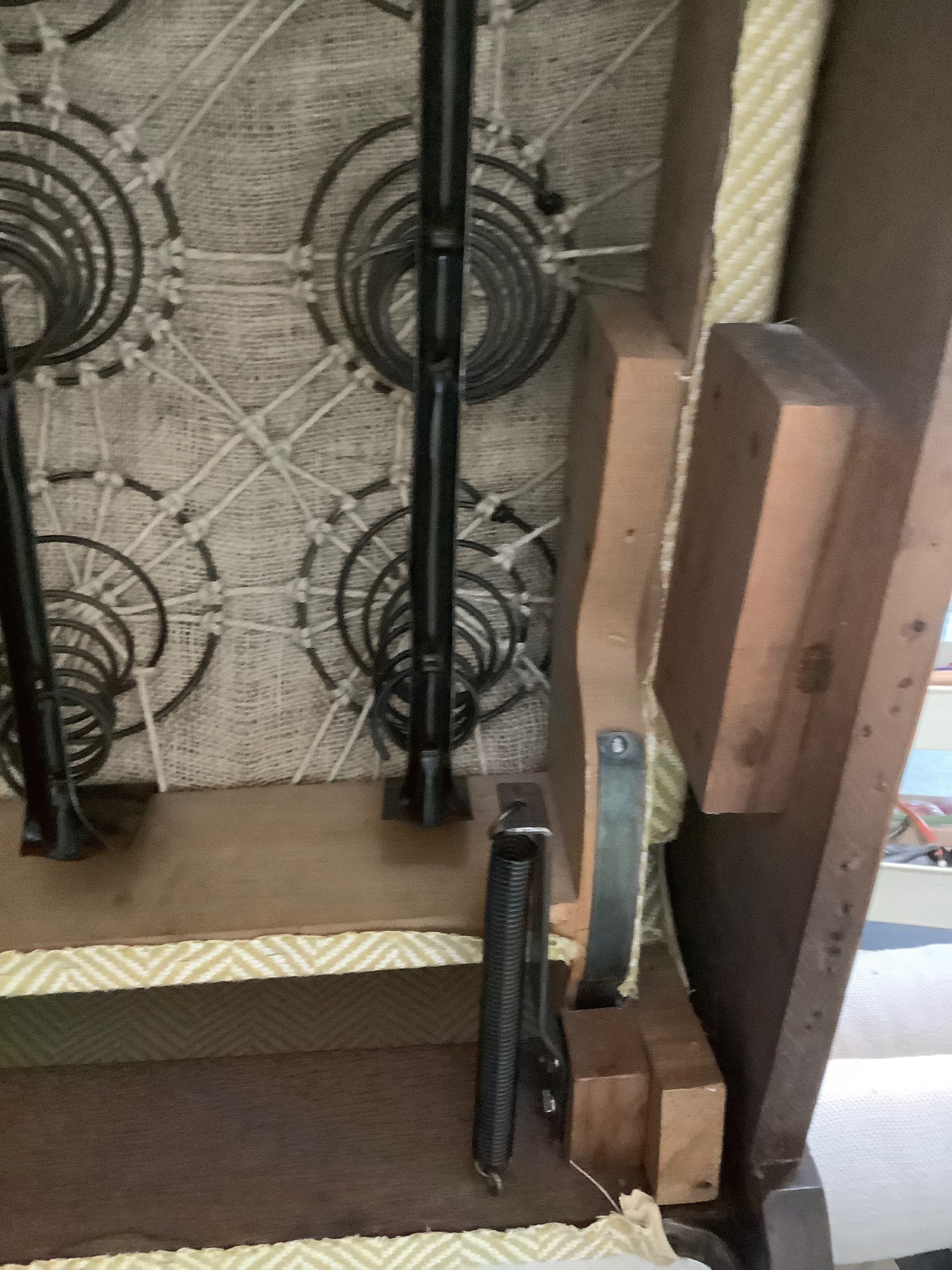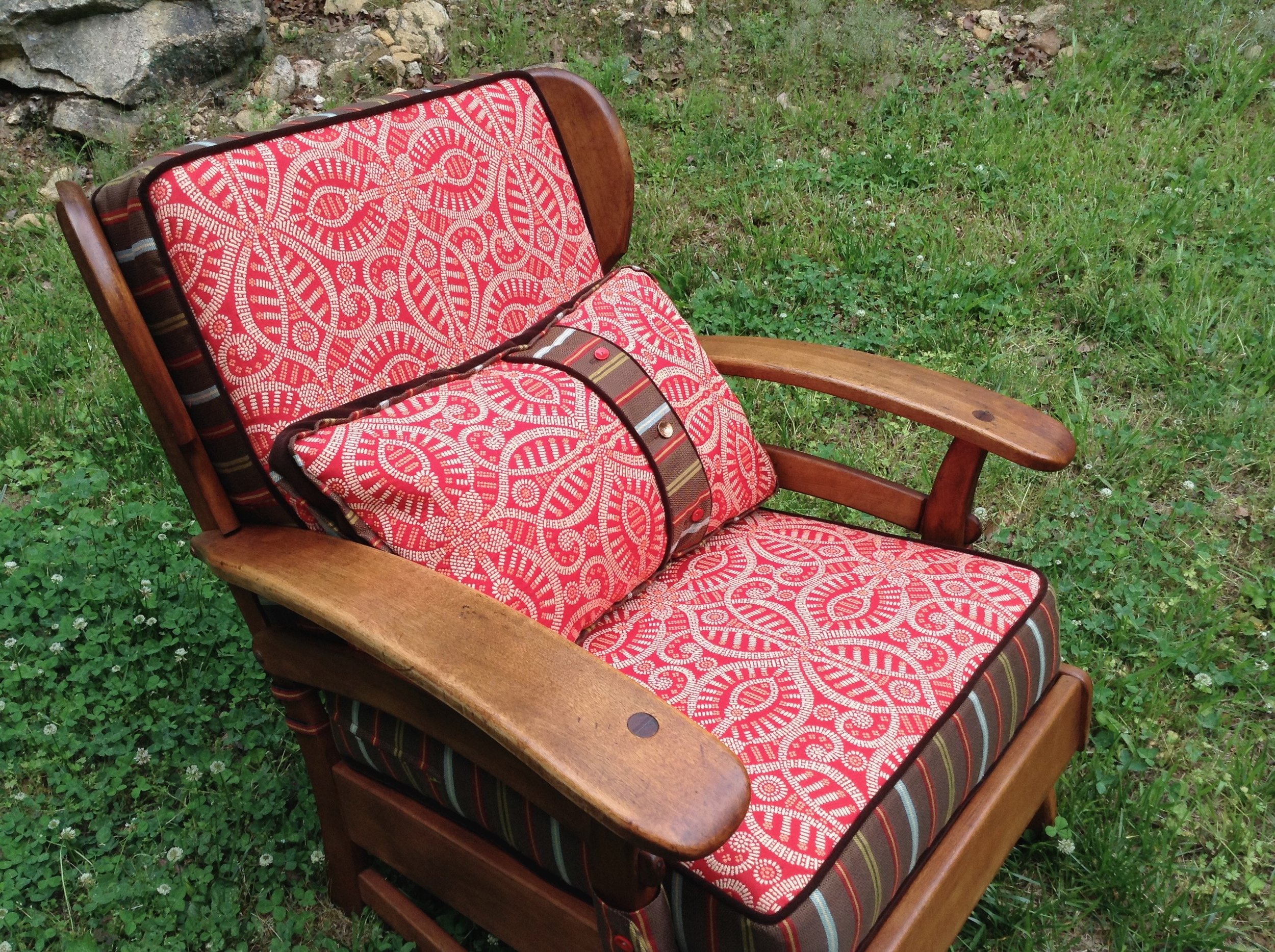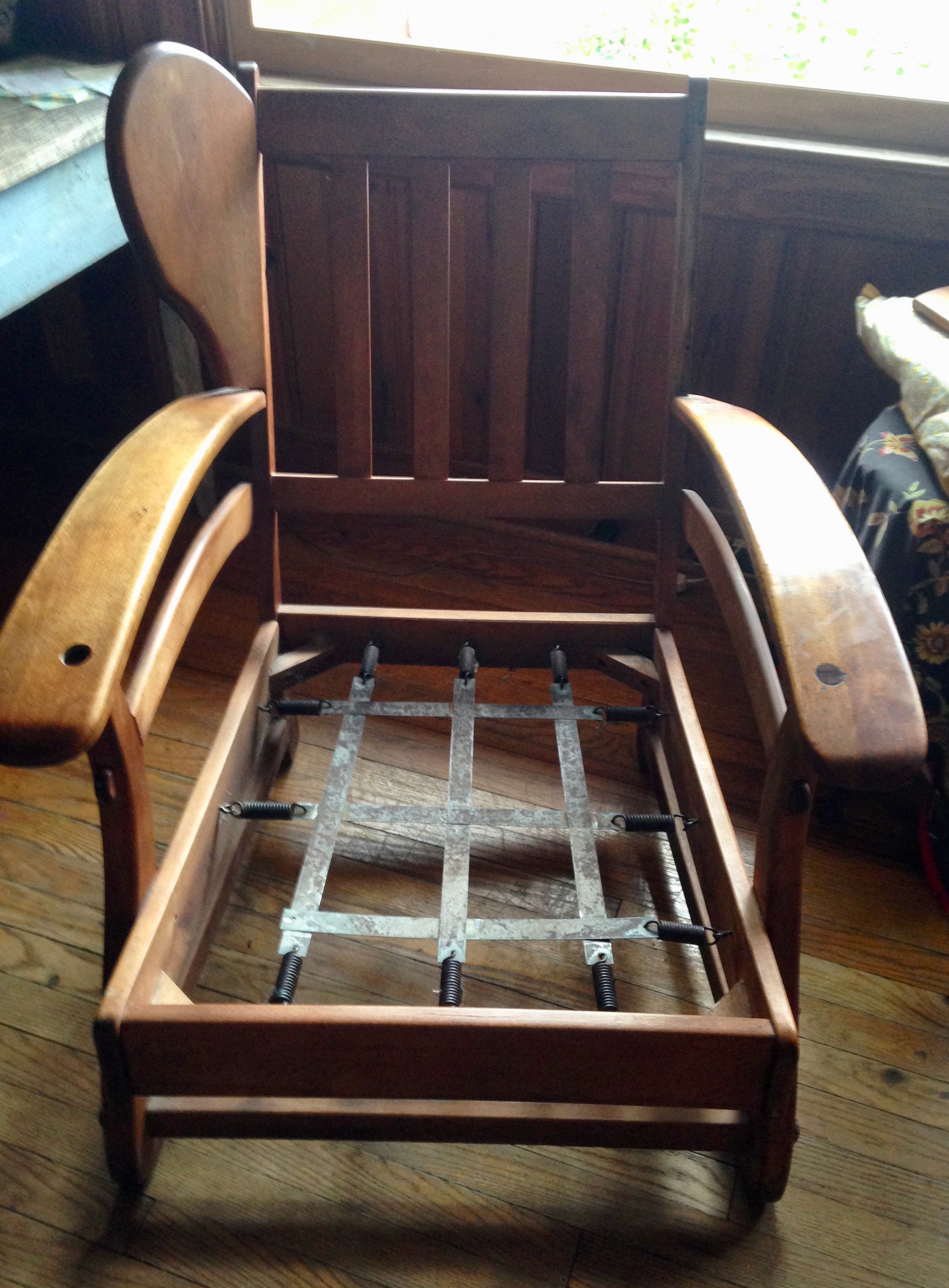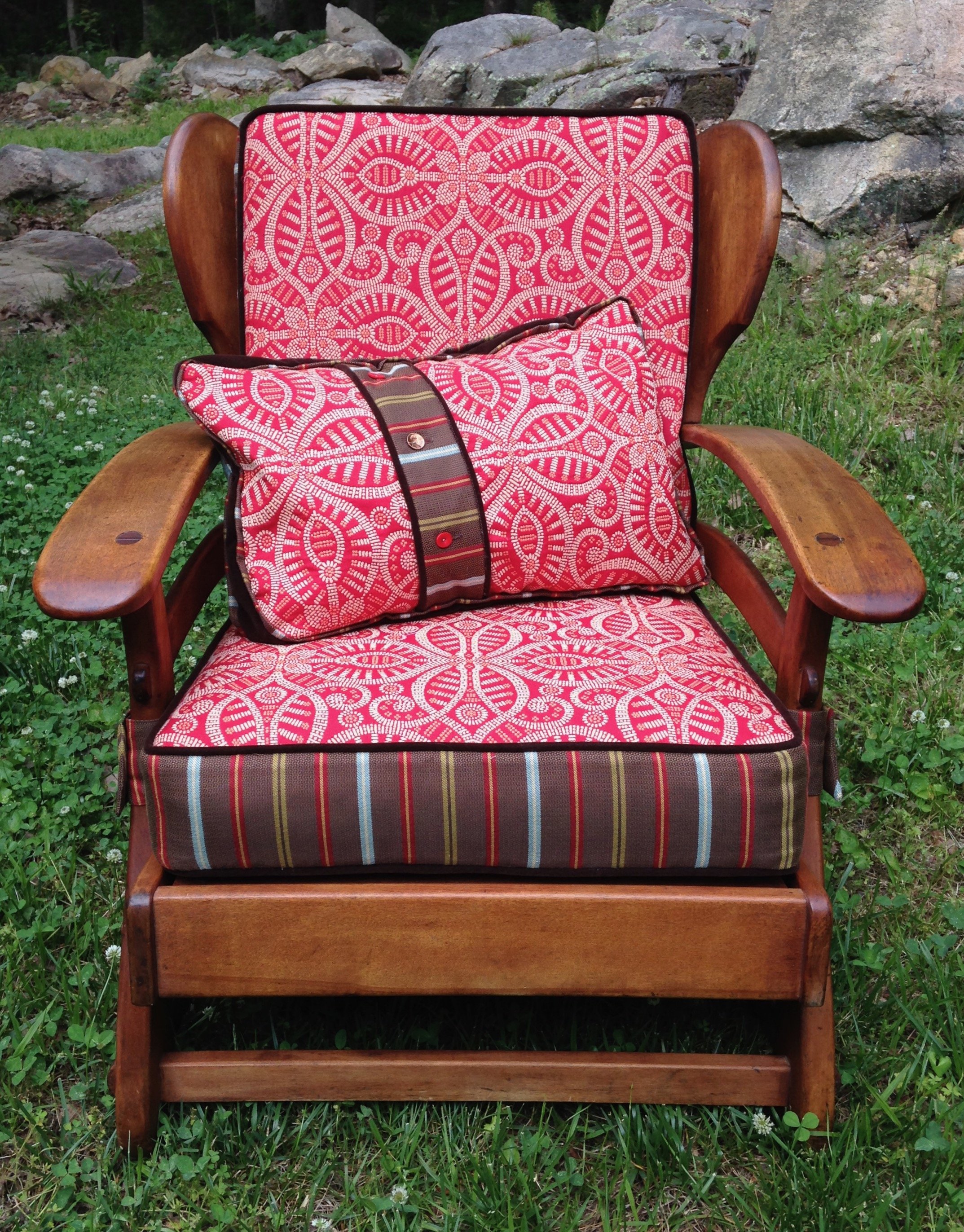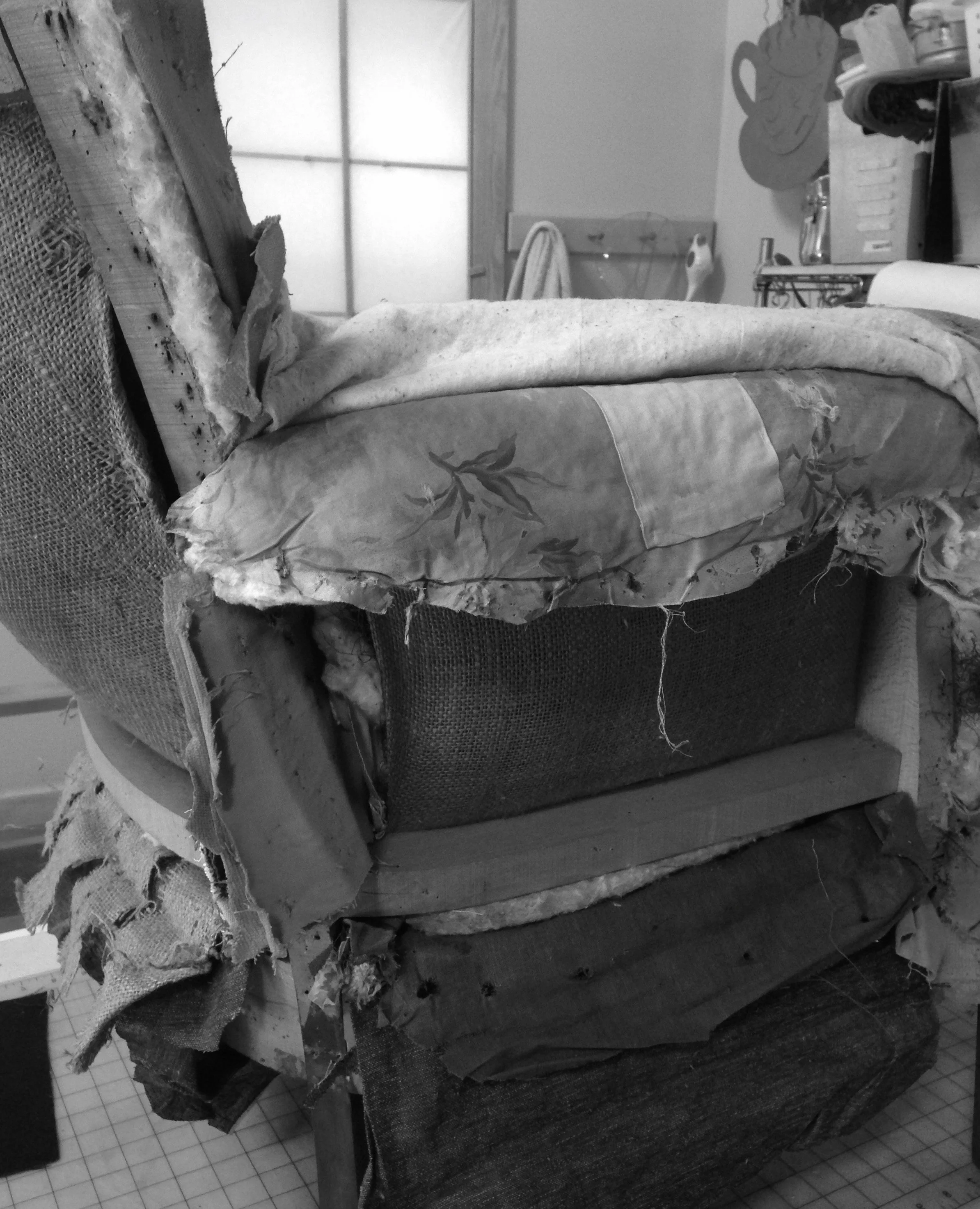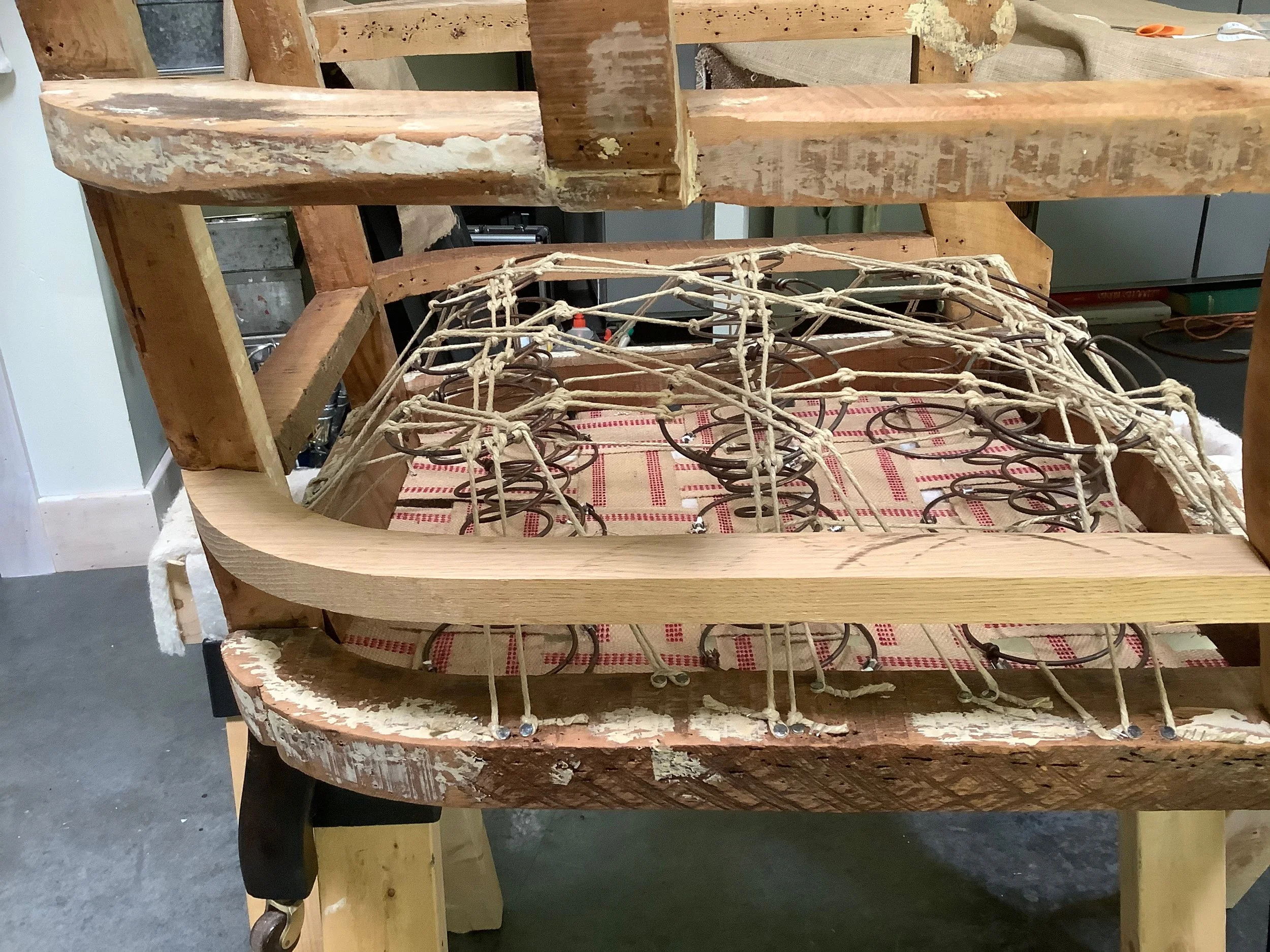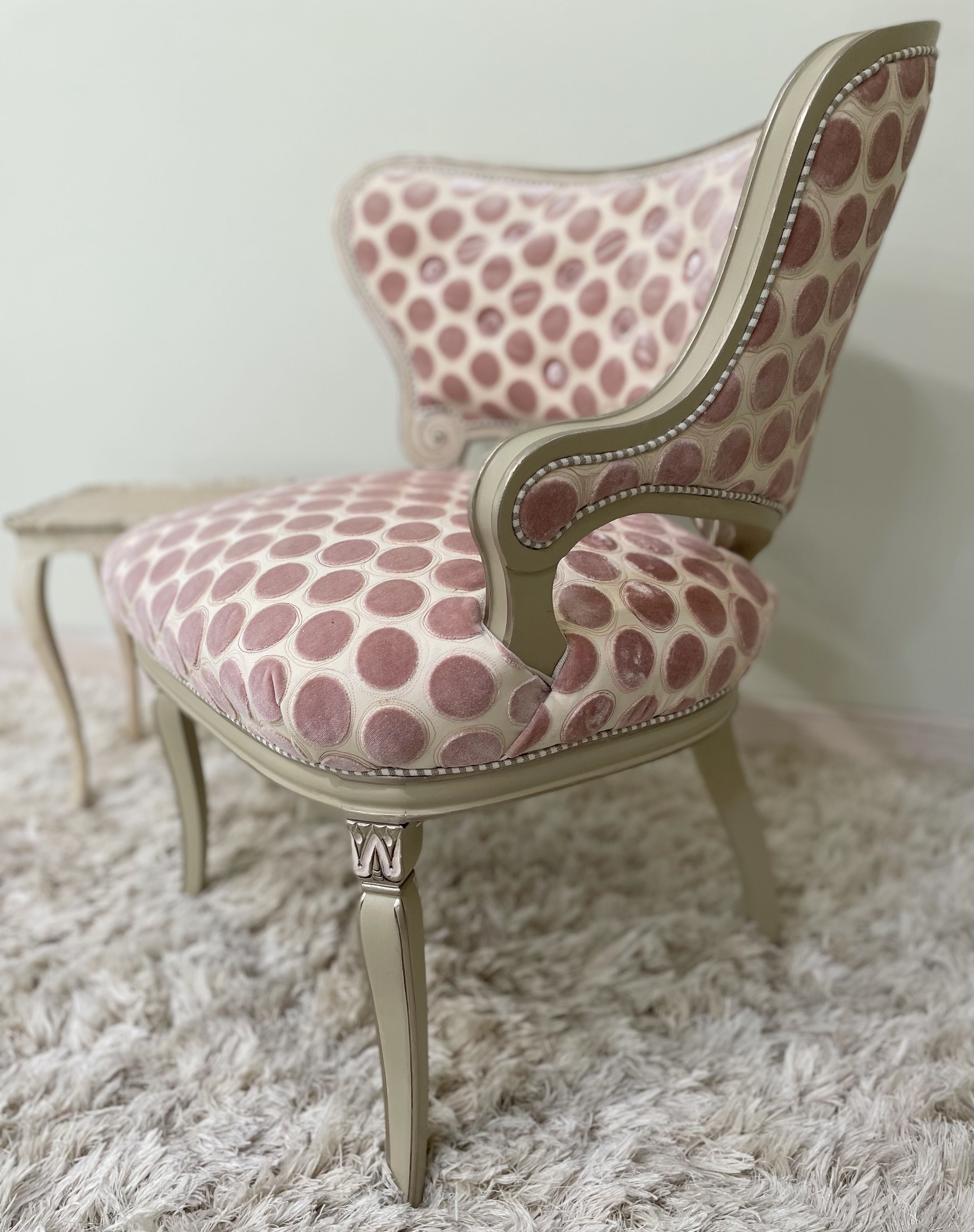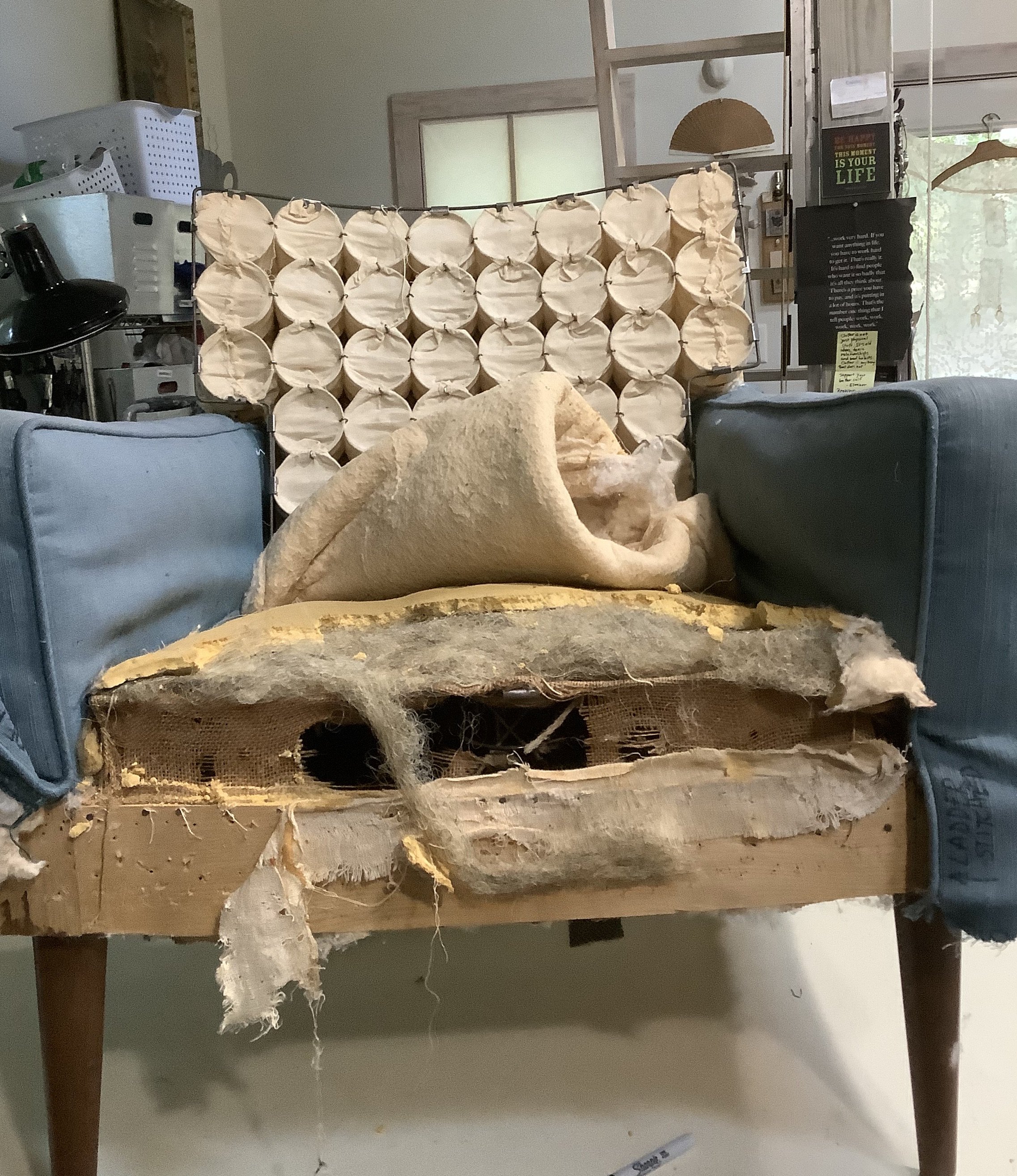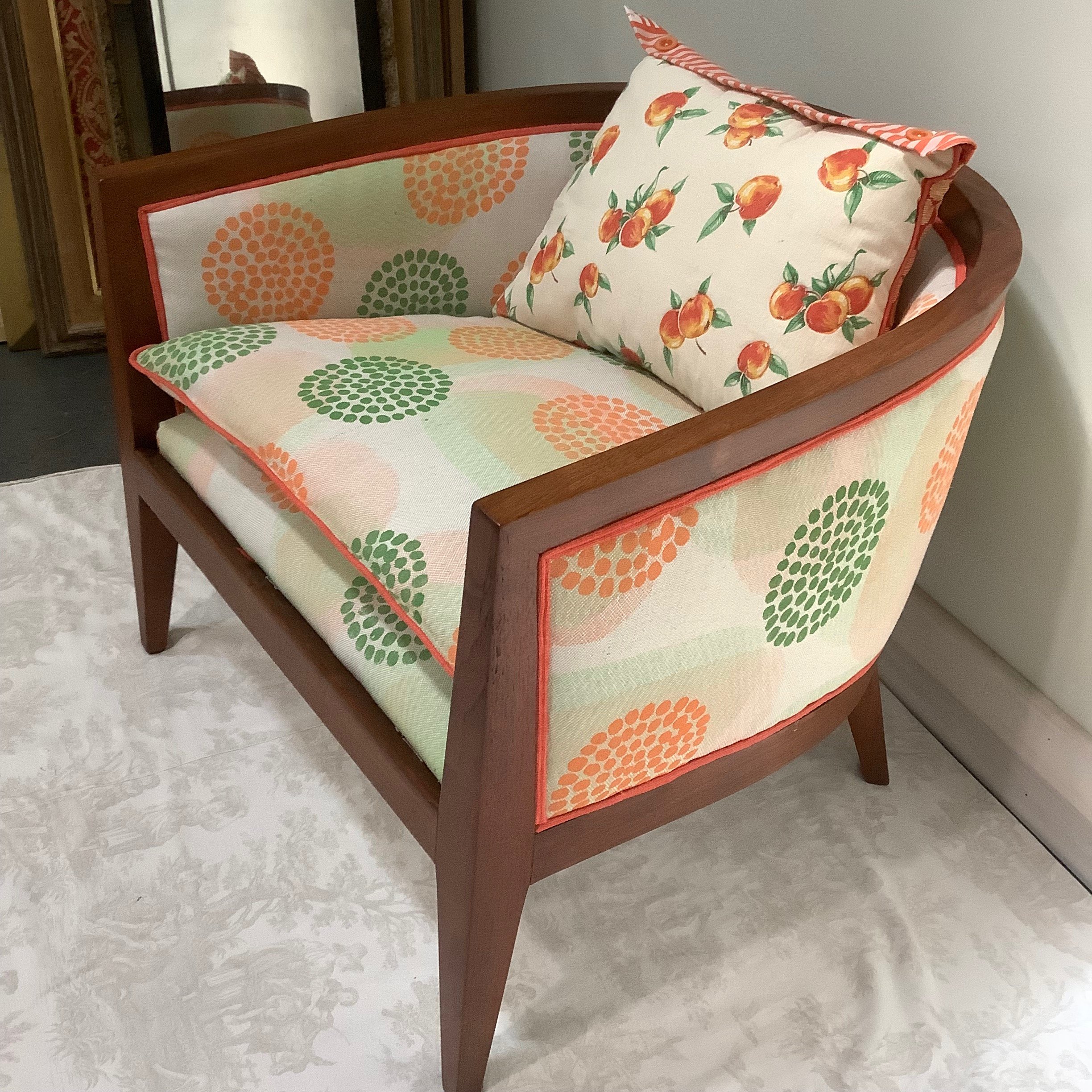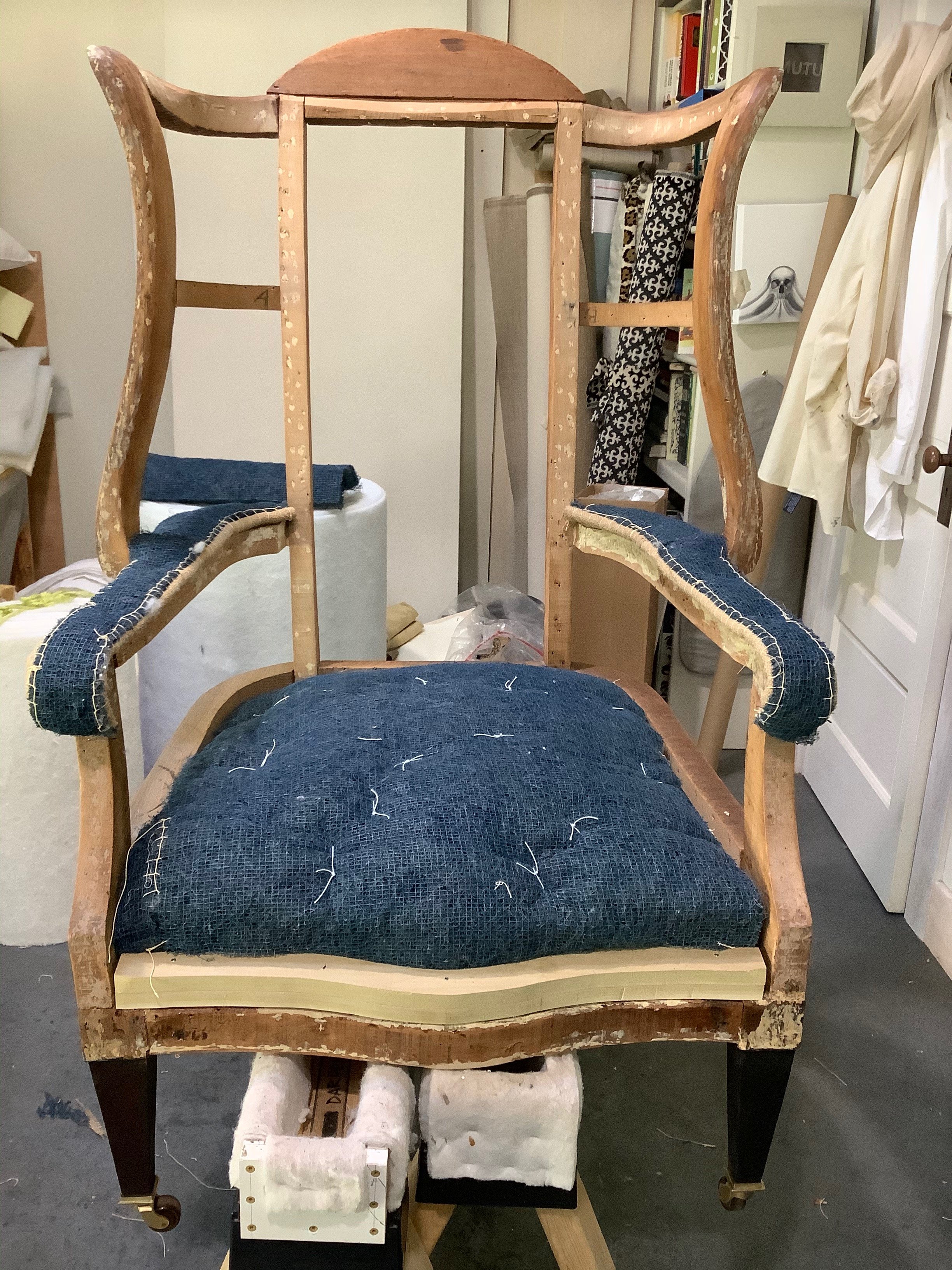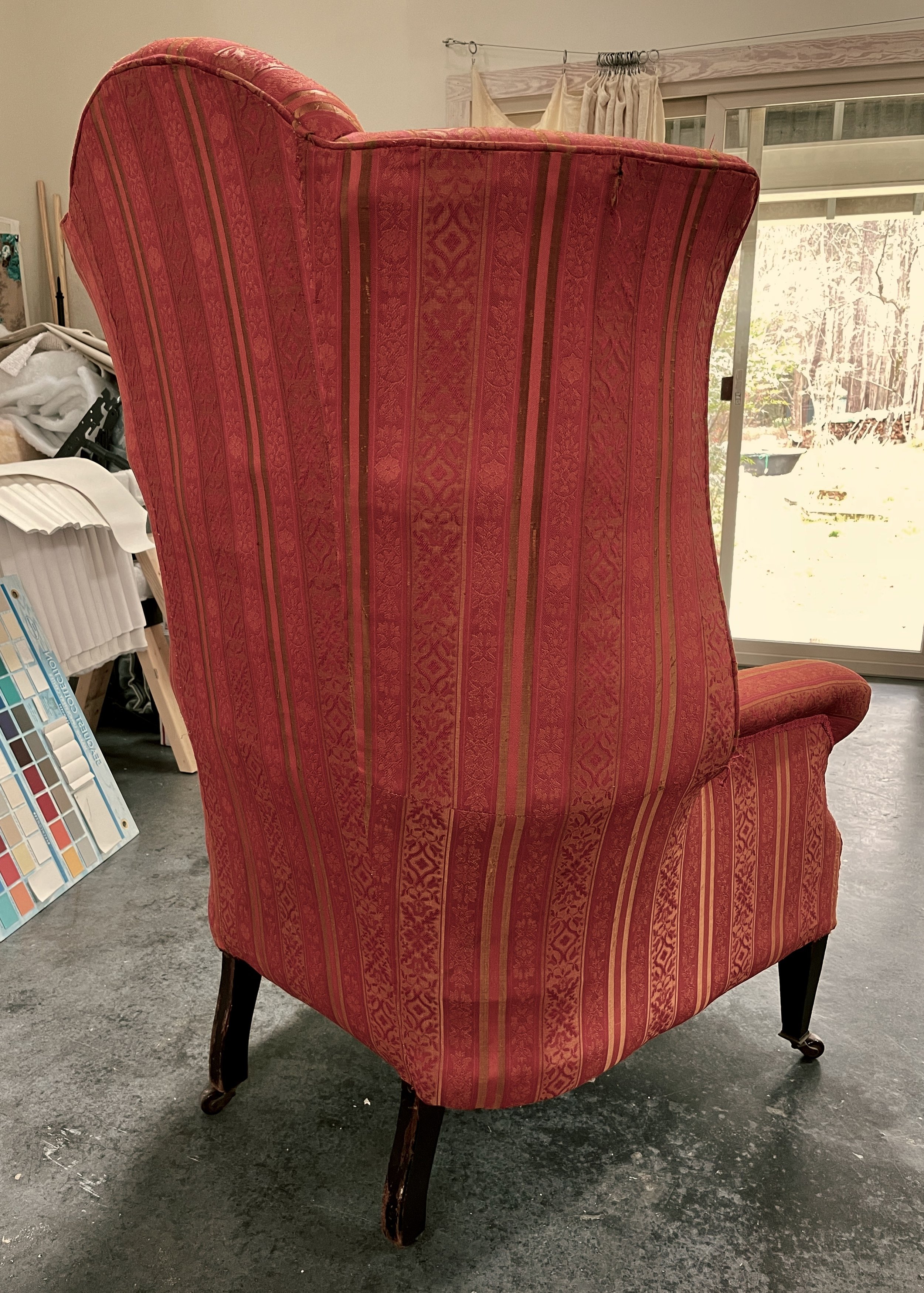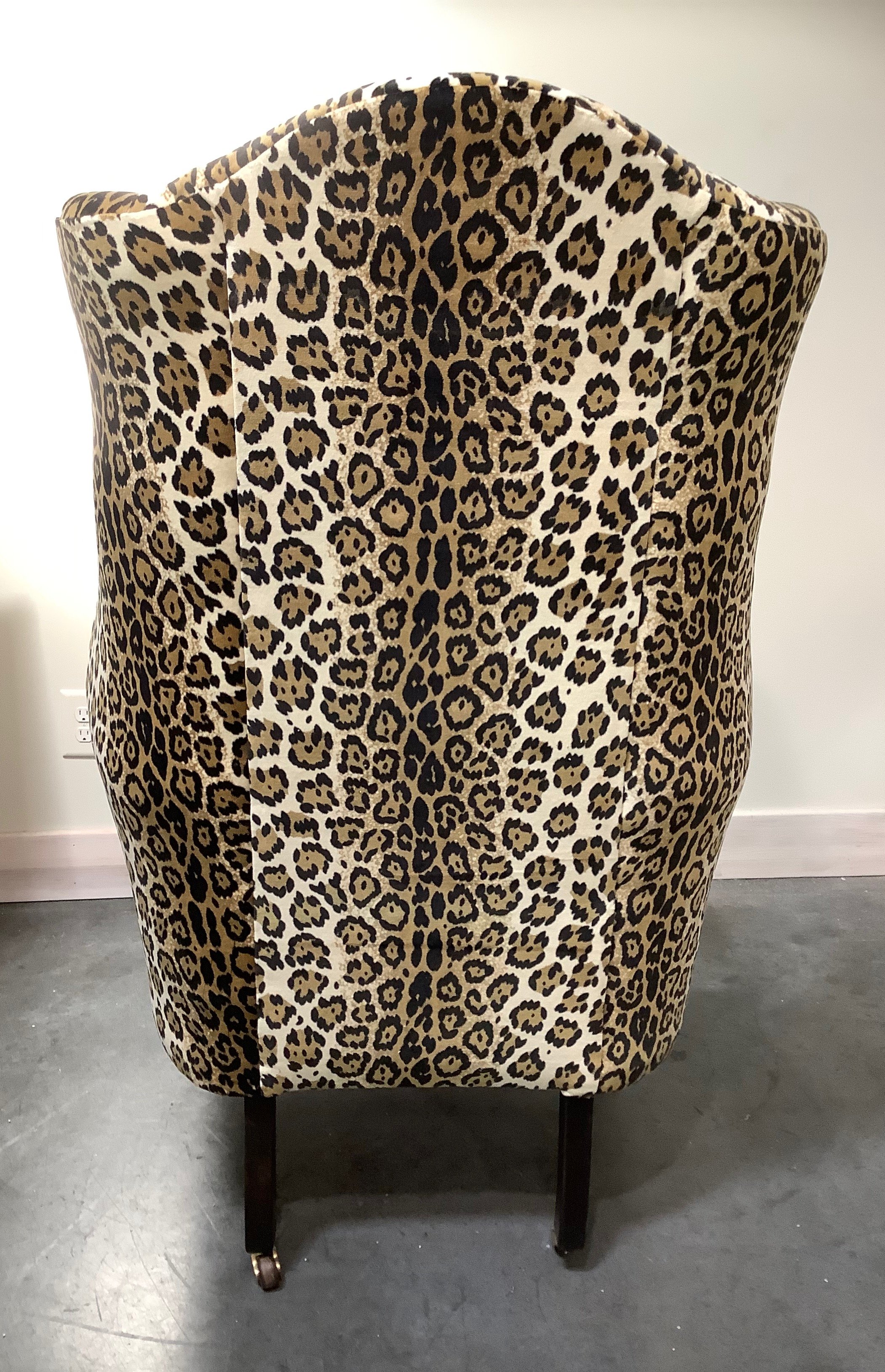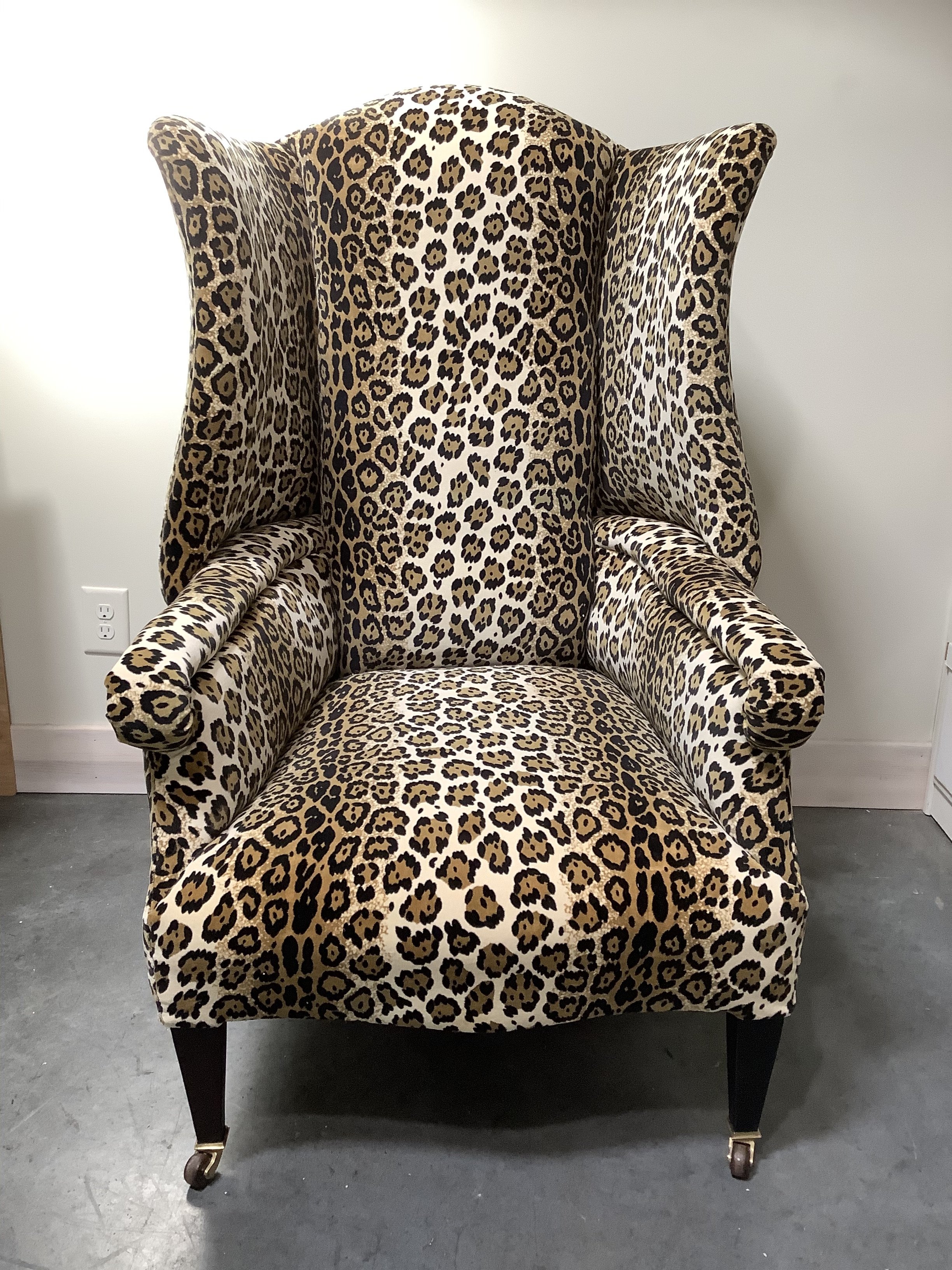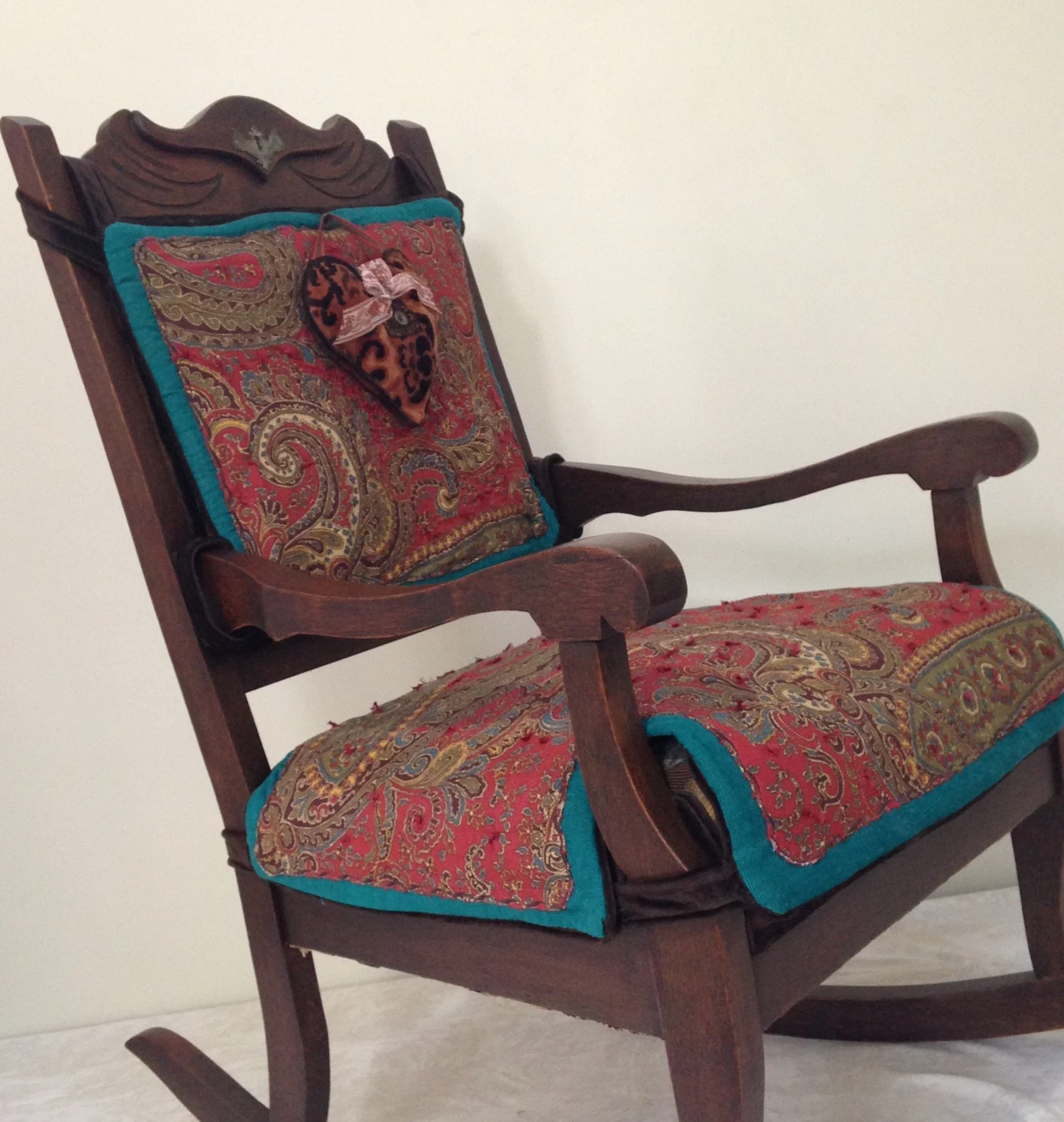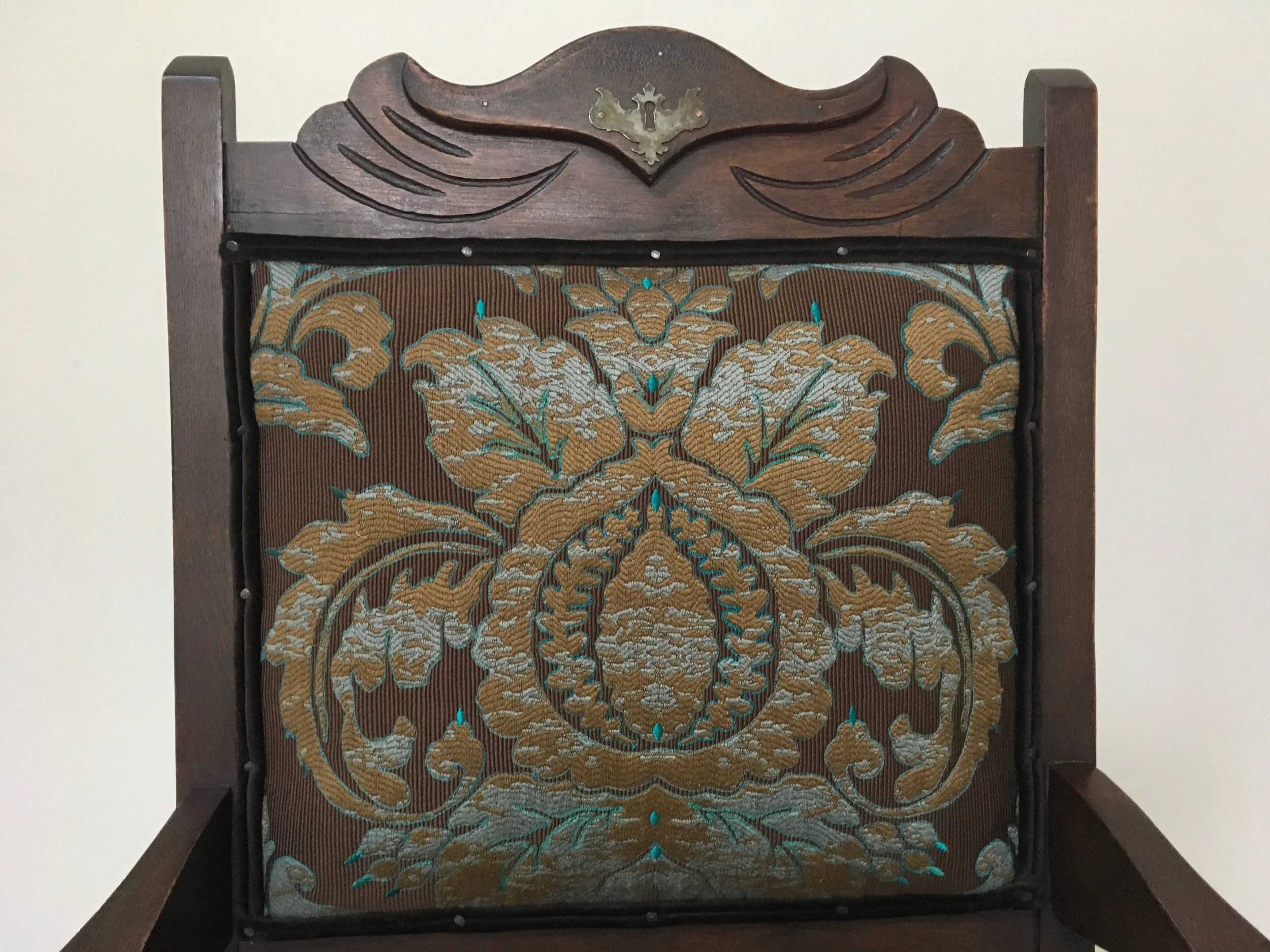About restoration…
Traditionally, reupholstering was done every 20-30 years. Back in the day, solid furniture was bought with the intention of periodically refreshing and reupholstering. Often these pieces became family heirlooms or ended up at antique shops or estate sales.
Typically they had been upholstered 2-3 times, perhaps more. In the majority of cases, each time a piece was upholstered, a new layer of cotton batting and fabric were simply applied over the old. Perhaps repairs were made here and there.
Fast forward to the third or so upholstering, 60-90 or more years later. The lower layers are really deteriorating. Burlap, old webbing are turning to dust, foam has lost its elasticity and is breaking down. If the piece is spring tied, it likely has multiple spots where the ties have broken, resulting in seat lumps. Loose frame joints may be to be re-glued or repaired.
The legs on the piece have seen their share of scrapes and gouges. The finish has seen better days, and is in need of a good cleaning and a “brightening up.”
It’s time to strip back to the frame, and give this piece some well deserved tender loving care. Once the layers are carefully stripped away, with its layers of old tacks, staples, paddings and fabric removed, repair can begin. Any damage and required repair come to the forefront and can be clearly seen.
Often you may not really notice structural damage to the frame. The old piece “seems” a tad wobbly, but after all, it’s OLD. That may be so. But remember all the old tacks, dried out webbing, and fabric tension are also doing their part in helping to keep this old piece IN ONE PIECE. When you remove all of those old layers, the real work begins.
This chair required quite a bit of frame work. A new rail was cut from white oak to replace one that had cracked in two, and its joint was a wasp nest of nails from previous poor repairs. I also added a white oak riser and an edge roll to the front rail of the chair. Previously, there had only been badly deteriorated padding.
After frame repair, and many glue and clamp sessions, the seat was re-webbed and the springs re-tied in an eight way tie.
Now the seat is really comfortable and will last for years to come.
You might wonder if it’s possible.
In most cases, it certainly is. After stripping out the old coir padding, burlap, and dust, this piece was taken outside and given a light sanding.
There is hope, even for the seemingly hopeless. Here I have added webbing, sewn in the spring coils, and am re-tying them in an eight way tie.
I gave the finish a freshen up, and we found some antique hardware to add at the top. With all new padding and new fabric, the results are beautiful. I also free-motion quilted the fabric, which added teal outlines and texture.
